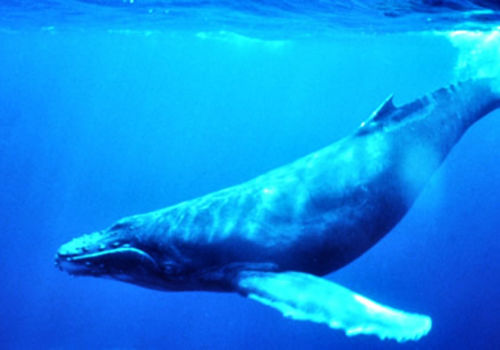
Humpback whale
Megaptera novaeangliaeHumpback whale
Introduction: The humpback whale (Megaptera novaeangliae) occur singly or in small groups, only forming larger pods when food is concentrated. These are amongst the most spectacular of marine mammals, making huge jumps out of the water (breaching) which cause great splashes when they re-enter. They also slap the surface of the water with their tails; this is called lobtailing and is also done using their long, pale flippers. Although these fantastic displays are associated with mating, it is widely believed they serve other social functions.
Humpback whales communicate between individuals of the same stock. An assortment of moans and screams can be interpreted into 'songs' of various pitches. They can last up to 30 min and each group has a distinctive pattern, that change from year to year. They can remain submerged in the water for up to 15 min.
Distribution: Humpback whales can be observed off the coast of Namibia in the winter months.
Diet: They feed on small fish such as mackerel, sardines and krill (crustaceans), but not in the winter. An aspect of their feeding habits is that they swim on their side with mouth open, straining water through the baleen. A feature of group feeding with the humpback, is the 'bubble net'. This is where they concentrate shoals of fish into a ball by swimming around the shoals, emitting bubbles from their blowholes, allowing them to lunge through them with open mouths.
Colouring: A dark grey body, with a light-coloured chin, throat and flukes.
Breeding: Humpback whales mate and give birth in tropical waters in winter. Gestation periods are 11-12 months and a single calf is born. Twins are born occasionally.
Size: Length 16m. Weight 40t. Calves are around 4.2m in length and weigh around 1t. They suckle their young for 10-11months.
Klein Windhoek

